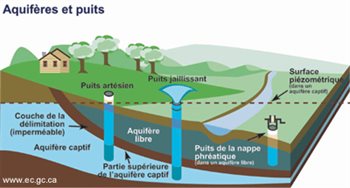Ensuring that our water supply remains untainted and at appropriate levels is essential to our generation and those to come. If industrialized business, farming, oil and gas exploration, and other industries are not managed properly, our water supply is directly threatened. Finding sustainable practices and using quality
well drilling supplies is key to these industries and our environment, and must also be regulated and backed by both our governments and the people.
Finding and practicing safe methods of production and extraction of our resources is not only essential to profitability, it will also play a big role in how long these industries will carry on throughout the years to come. When talking about the impact on groundwater specifically, there are a few things to make note of:
Water never sits still.
Water is continuously on the move. It never sits in one place permanently. Whether it evaporates or is channeled through rivers and streams, or underground; it is constantly undergoing transformation and transportation. The basic water cycle is as follows:
- Precipitation (water) falls
- Run-off occurs as water travels through above and below-ground waterways
- Water consumed by plants is released via transpiration
- Water evaporates from ground water sources like rivers and lakes, or oceans
- Evaporated/transpirated water forms clouds (condensation)
- Condensation falls as rain/precipitation, and the cycle repeats
Aquifers and Aquitards
An aquifer is a porous formation that acts similarly to a sponge. It holds and will produce water when drilled and pumped. Common types of aquifer are sands and gravel. They are recognizable by their relatively large pockets in between the rock particle that allow for the absorption of water and other liquids. There are three main types of aquifer:
- Unconfined aquifers—these are porous aquifer who’s top layer is also the water table
- Confined aquifer—the porous aquifer formation is located below a non-porous aquitard
- Semi-confined—also known as a leaky aquifer, these are partially surrounded by aquitards with some permeability
The shallowest, unconfined aquifers are obviously the easiest to access, and also the ones most susceptible to pollution. The deeper you go, the more confined and semi-confined aquifers you will find. When an aquifer is found at great depths, and the surrounding materials are aquitards, the more secure it is from contamination.
Conclusion
So in regards to groundwater safety, determining the safest method and location to dispose of wastewaters from drilling projects, or when sourcing water for a
well drilling operation; it is critical to keep in mind the makeup of the aquifers in order to make a sound judgement.
Sources:
